The business case for brand storytelling: Inspired leadership, employee engagement, greater retention and growing sales.
Rags or riches? Your storytelling ability will lead to one or the other
Steven knew he was losing his audience. He stood there, 16 floors up in the Transamerica building in San Francisco, watching his dream fall apart.
Ten minutes into his investment pitch for his struggling travel company, Steven knew he was boring his audience with stats, facts, and figures. Twenty minutes in, his prospective investor nodded to his assistant to start picking up their papers to leave.
Meeting over.
Then Steven had a flash of inspiration. Or was it desperation? He noticed the guy’s name looked Danish, so he asked him if he was from Denmark.
Confused, and a little annoyed, the venture capitalist said, “Yes. So what?”
“You’re from Denmark and I’m from Tasmania. We’re buddies!” Steven exclaimed.
“Huh?” the guy grunted.
“Your Crown Prince Frederick of Denmark came to the Syndey Olympic Games in 2000 and went to a bar called the “Slip Inn.”
“So?”
“He met a girl there, a commoner from my hometown in Tasmania. Her name is Mary.”
“You mean Princess Mary of Denmark?” he asked.
“The very one,” Steven smiled. “It’s the perfect rags to riches story, don’t you think?”
“We love Princess Mary,” the executive exclaimed, easing back into his chair.
Everything changed in that moment. They connected through the story of Prince Frederick meeting Princess Mary in a pub. The executive invested $12 million dollars in Steven’s company later that day.
Steven just experienced his own rags to riches tale because he told a story.
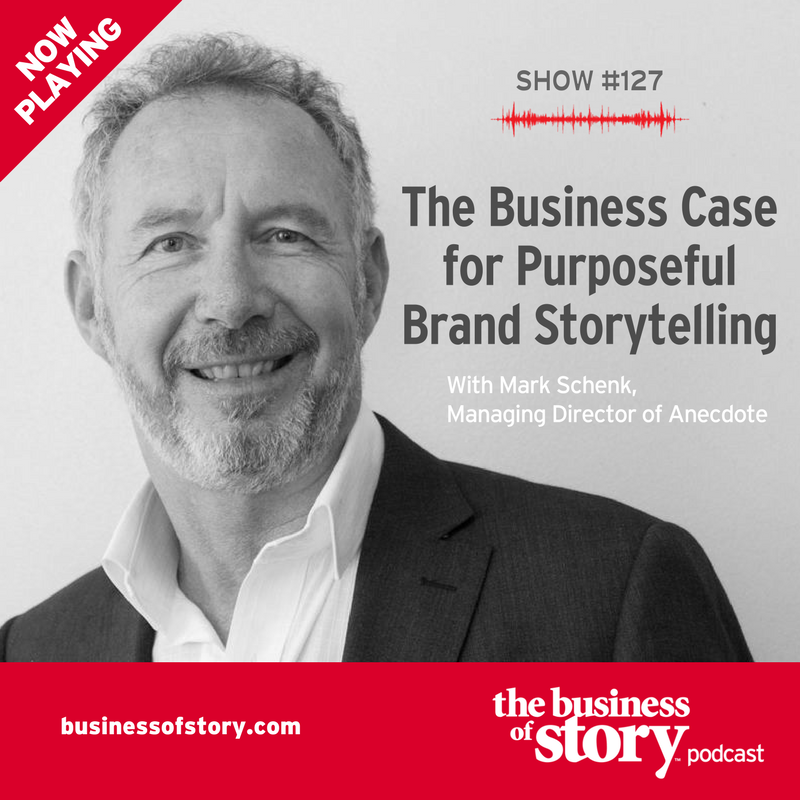 This story was told to me by Mark Schenk, Managing Director of Anecdote in Melbourne, Australia. He and his business partner, Shawn Callahan, created the Storytelling for Leaders and Storytelling for Sales deliberate practice programs.
This story was told to me by Mark Schenk, Managing Director of Anecdote in Melbourne, Australia. He and his business partner, Shawn Callahan, created the Storytelling for Leaders and Storytelling for Sales deliberate practice programs.
Mark was recently in Phoenix where we captured this story – and many more – on our latest edition of the Business of Story Podcast: The Business Case for Purposeful Brand Storytelling.
This is a true story that Mark had heard while attending a panel of four CEO’s who had grown their brands from local to global companies.
This CEO, who I called Steven for the sake of this story, told the crowd he got lucky that day.
But Mark doesn’t think so.
He believes the luck was stumbling upon a connection with some fast thinking and gut instinct. But what would have happened if Steven had gone in with a couple of stories in his pocket ready to share depending on how the meeting went?
In fact, as Steven’s story reveals, you can take luck out of the sales equation altogether when you become an intentional business storyteller.
Business storytelling creates significance for otherwise meaningless and mundane products and services
Steven’s Danish royalty connection story generated a return on investment of $12,000,000. And all he had to invest was his time, wit and wisdom. It was a story that brought meaning to their relationship, elevated him above the other average Joes asking for money for their startups, and connected on a visceral human level.
You can earn a tremendous ROI on brand storytelling as well. Goodwill of Central and Northern Arizona grew by more than 400 percent when they dialed in their brand story using the Story Cycle System. And Adelante Sustainable Healthcare grew by more than 300 percent with a freshened brand story after 30 years of serving the uninsured in Arizona.
But can storytelling work for you? Can a story turn a cheap tchotchke like this paperweight into an ROI of 28x its worth?
The original price for this acrylic-encased globe was $1.49. But it sold for $197.50. This thrift store find is just one of 100 thingamajigs that Joshua Glenn sold on eBay in an experiment called the Significant Objects Project.
The project ran from 2009 to 2010 testing the power of story to create meaning and money out of the mundane. Glenn and his team invested no more than $1.50 per item totaling $128.74 for the whole lot. Writers attached a fictional story to each bauble and posted them on eBay. Their junk generated $3,612.51 creating an ROI of 2,700 percent.
Do you think they would have generated that same ROI without the stories?
The profit of human connection through brand and business storytelling
This demonstrated value of storytelling was so fascinating that the New York Times chronicled Glenn’s experiment: He Takes Stuff Seriously. The Future of Storytelling organization also documented his findings at their annual conference.
But can you duplicate the Significant Objects Project results in regular business? I was curious, so I went looking and found Sock Club. They are a monthly subscription service for creative socks delivered to your home whose business model is totally reliant on storytelling. Co-founder of Sock Club, Noah Lee, said.
“Something that we strongly believe in is the power of storytelling and the power of human truth.”
Noah joined me on the Business of Story podcast to explain how they saved their company by moving from a brand selling a colorful commodity to one that emphasizes brand storytelling in everything they do. They literally elevated the meaning, and therefore the value, of socks by simply knitting a story into the creation of each unique pair.
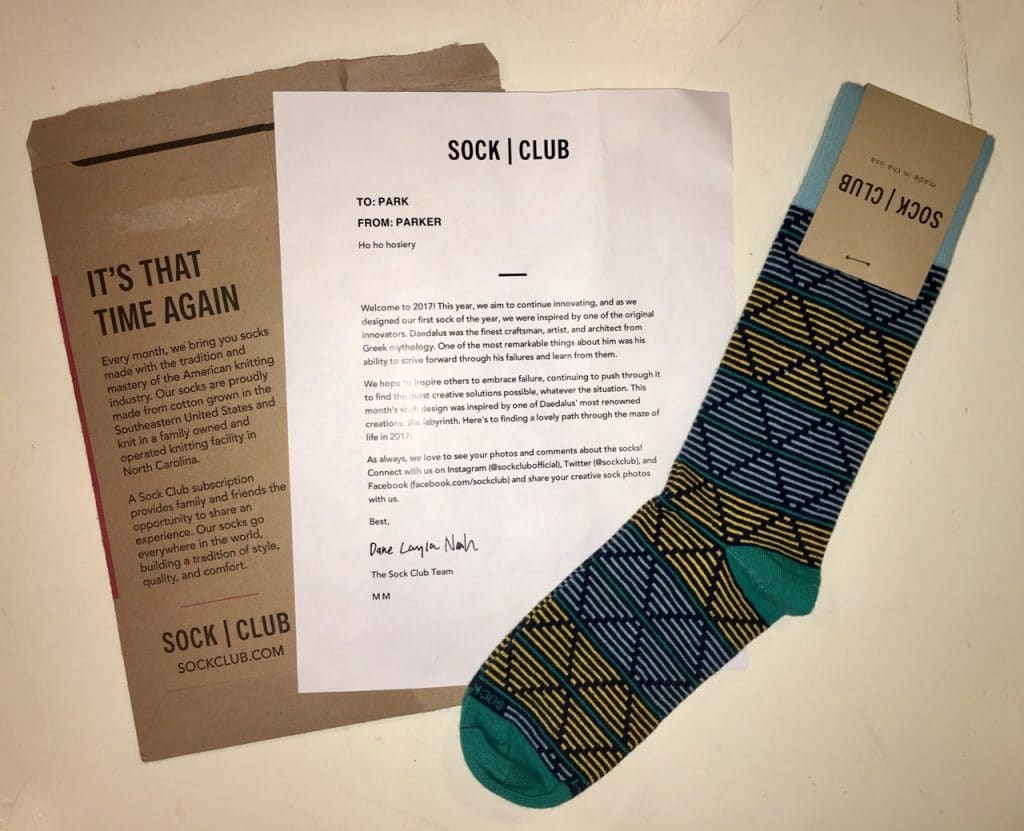
The cost of NOT developing your storytelling culture
While not every story will be as bullish as the stories I described above, you cannot afford to ignore investing in storytelling in your organization.
As Mark mentions on our show, among the top concerns employees have when asked about engagement with their organization is their relationships with their boss and colleagues, and the lack of communication inherent in large companies. But what does that mean? I went to the 2017 Employee Engagement and Retention Statistics by Access Perks and pulled some of the top findings:
- 51% of the U.S. workforce is not engaged (Management Training Specialist)
- Disengaged workers cause massive losses in productivity – between $450 and $500 billion a year (Mental Health America)
- 16% of employees said they felt “connected and engaged” by employers (EmployeeChannel)
- 56% of workers are planning to look for a new job in the next 6 months (PayScale)
- 78% of employees who say their company encourages creativity and innovation are committed to their employer (ReportLinker)
Employees are an “appreciating asset,” meaning they produce compounding value for the organization over time. So losing them is costly. It varies by wage and role of employee. For example, a CAP study outlined the average costs to replace an employee equal:
- 16 percent of annual salary for high-turnover, low-paying jobs for people earning under $30,000 a year. The cost to replace a $10/hour retail employee is approximately $3,328.
- 20 percent of annual salary for midrange positions (earning $30,000 to $50,000 a year). The cost to replace a $40k manager is around $8,000.
- Up to 213 percent of annual salary for highly educated executive positions. The cost to replace a $100k CEO is $213,000.
Bored to tears
If you are not communicating and building relationships with your employees through empathic storytelling that demonstrates your caring for them and their careers, you can count on the heartache of their lack of engagement and even retention. And here’s where it hurts the most.
Josh Bersin of Bersin by Deloitte, in a recent article on employee retention, outlined the following factors a business should consider in calculating the “real” cost of losing an employee:
- The cost of hiring: a new employee including advertising, interviewing, screening, and hiring
- Cost of onboarding: training and management time is expensive
- Lost productivity: it can take a new employee up to 24 months to reach the productivity of an existing person
- Lost engagement: fellow employees who see high turnover often disengage and lose productivity
- Customer service issues: new employees take longer, are often less adept at solving problems and tend to make more errors
- Training cost: a business likely invests 10 to 20 percent of an employee’s salary or more in training over their first two to three years
- Cultural impact: whenever someone leaves, others wonder why, which distracts them from their job at hand
- Wisdom withdrawal: long-term employees that decide to leave the company take loads of historical knowledge with them creating an insight and expertise void for the new employees
Jack Altman, CEO of Lattice, creators of performance management software, has created this simple formula to understand your cost of turnover. It’s your number of employees times your annual turnover percentage.
While it’s difficult to capture every expense and some of the big intangible costs like impact on employee morale, all you have to do is consider four major buckets:
- Cost of hiring
- Cost of onboarding and training
- Cost of learning and development
- Cost of time with the unfilled role

Jack even provides an example in this Huffington Post piece: if you are a 150 person company with 11% annual turnover, and you spend $25k per person on hiring, $10k each on turnover and development, and lose $50k of productivity opportunity cost on average when refilling a role, then your annual cost of turnover would be about $1.57 million.
Reducing this by just 20%, for example, would immediately yield over $300k in value. And that’s not including the angst and cultural drain felt when you lose great people.
He provides this spreadsheet so you can use your own numbers to see what your costs might look like.
The ROI of Storytelling in Social Media
One of our Business of Story Raconteur members in our private Facebook Group, Dirk Margheim, just reported the impact storytelling had on a promotional video they produced.
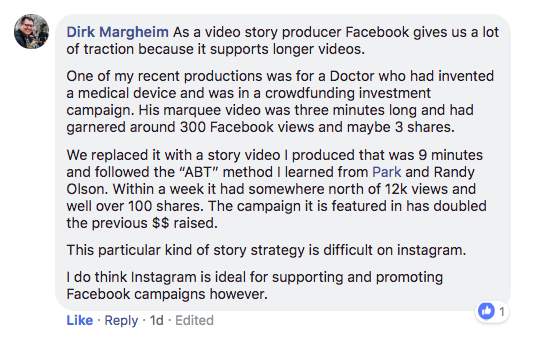
He noted, “As a video story producer, Facebook gives us a lot of traction because it supports longer videos. One of my recent productions was for a Doctor who had invented a medical device and was in a crowdfunding investment campaign. His marquee video was three minutes long and had garnered around 300 Facebook views and maybe 3 shares. We replaced it with a story video I produced that was 9 minutes and followed the “ABT” method I learned from Park and Randy Olson. Within a week it had somewhere north of 12k views and well over 100 shares. The campaign it is featured in has doubled the previous $$ raised.”
What is business storytelling worth to you?
I asked my fellow professor in the Executive Masters of Sustainability Leadership program at Arizona State University, Dr. Kevin Gazzara of Magna Leadership, how he calculates the cost of employee engagement. He said because they are usually working with top leaders, the cost to an organization can be as much as 60 percent of their annual salary if they lose them.
“I point out to my clients that if they invest $6,000 in leadership training that retains that executive and helps them grow, they can expect a minimum of a 10 percent return just in retention alone. That’s not even adding in the ROI they create for the organization by becoming a better manager and being more engaged with their troops,” Dr. Gazzara said.
“Where else can you count on a 10+ percent return on your investment in business?” he quipped.
Authentic and transparent communication is also at the top of Dr. Gazarra’s list of key leadership traits. These are the same skills Anecdote’s Schenk hears need to be developed in corporate managers and leaders around the world.
“Whenever I ask a customer why they are inquiring about story training, it’s always because they want to build rapport and influence within their team,” Schenk said.
“We teach them to turn opinion and assertions into anecdotes describing the real human impact told through their stories. It works every time to connect with people and move them to action.”
The ROI of business storytelling
I asked Toronto’s Doug Keeley, founder of The Mark of a Leader how he calculates the ROI of business storytelling in leadership. He asks, “If after doing the Storytelling for Leaders training program you could get a 10% increase in productivity or performance improvement because your leaders connected better with your people, what would that be worth to you?
“Or if you could get a 5% improvement in your employee engagement scores, what would that be worth? Presumably a lot more than the $20,000 it will cost to put your top 16 leaders through our six-month program.
“If we helped your sales team sell 10% more – or helped them retain 50% of your annual lost customers – what would that be worth? Presumably a lot more than the $20,000 to put your top 16 salespeople and managers through our 6-month program.”
Keeley believes that stories shape the behaviors that create the culture that drive the performance that grow the behaviors that create the culture that drive even greater performance, etc. in this virtuous cycle that develops relationships in organizations to accomplish amazing feats. That’s why top business leaders like Sir Richard Branson, Steven Wynn and Steve Jobs have invested in developing storytelling talents in their people.
The ROI of story can be epic.

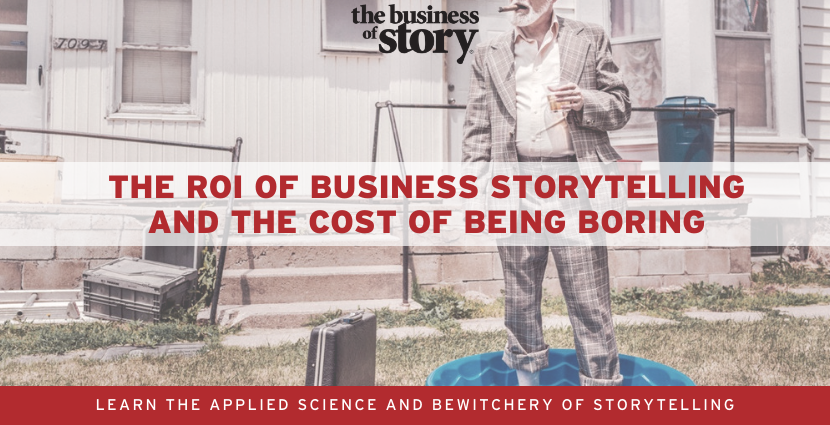



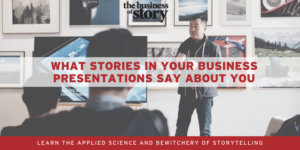
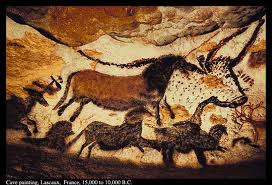





at 10:02 am
More examples of the ROI of brand and business storytelling are found in this excellent article from Blueriver: http://mxp.getmura.com/blog/what-one-citys-identity-crisis-can-teach-you-about-storytelling/?utm_campaign=coschedule&utm_source=twitter&utm_medium=blueriver&utm_content=What%20One%20City%27s%20Identity%20Crisis%20Can%20Teach%20You%20About%20Storytelling
at 10:04 am
You can also learn about Avantpage’s 30% increase in new business after it launched its new refreshed and focused brand story: https://businessofstory.com/casestudy/rebranding-avantpage/
at 10:00 am
[…] So why don’t we use more storytelling to grow our brands, businesses and people? Quite simply, it’s because our education system doesn’t teach us the importance of story in communications. We are taught to think and speak from a logical perspective. You hear it from executives that dismiss communications as “soft relationship skills” versus their perceived “hard skills” of measurable activities and outcomes. But they’re wrong. Because business storytelling generates significant ROI. […]
at 1:47 pm
[…] at the Business of Story are measured by ROI of business storytelling, revenue growth, new client acquisition, team alignment with diversity and inclusion, personal […]
at 1:33 pm
[…] you craft a narrative for your business without sounding like you’re selling something? What if your story is boring? How do you create something you can be proud of? Here are some ideas to get you […]
at 3:40 pm
[…] on a copy can potentially increase the value of your product by 2706%. See how Steven generated an ROI of $12,000 in less than twenty minutes using a compelling […]